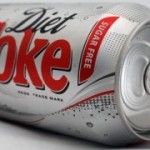
February 11, 2009 — Drinking diet soda at least daily is associated with significantly greater risks for select incident components of the metabolic syndrome (MetSyn) and type 2 diabetes, according to the results of an observational study reported in the January 16 Online First issue of Diabetes Care.
“Two longitudinal cohort studies have shown positive associations between diet soda consumption and incident MetSyn independent of baseline measures of adiposity,” write Jennifer A. Nettleton, PhD, from the University of Texas Health Sciences Center in Houston, and colleagues. “Replication of previously observed diet soda-MetSyn associations in a distinct cohort would bolster their credibility and provide further insight into the nature of the relationship. Previous studies have not addressed associations between diet soda and individual MetSyn components or risk of type 2 diabetes nor have they fully addressed potential longitudinal mediators of these relationships, i.e., changes in adiposity status.”
The goal of this study was to evaluate associations between diet soda consumption and the risk for incident MetSyn, its components, and type 2 diabetes in the Multi-Ethnic Study of Atherosclerosis (MESA).
Initial evaluation was performed from 2000 to 2002, at which time baseline food frequency questionnaires measured diet soda consumption. Three follow-up evaluations were performed from 2002 to 2003, 2004 to 2005, and 2005 to 2007. Incident type 2 diabetes was defined as fasting glucose levels of more than 126 mg/dL, self-reported type 2 diabetes, or use of diabetes medication. National Cholesterol Education Program Adult Treatment Panel 3 criteria were used to define MetSyn and its components. After adjustment for demographic, lifestyle, and dietary confounders, hazard ratios (HRs) were estimated for type 2 diabetes, MetSyn, and MetSyn components.
Compared with participants who did not drink diet soda, those who drank diet soda at least daily had a 36% greater relative risk for incident MetSyn (HR, 1.36; 95% confidence interval [CI], 1.11 – 1.66) and a 67% greater relative risk for incident type 2 diabetes (HR, 1.67; 95% CI, 1.27 – 2.20).
Of the individual components of MetSyn, only high waist circumference (men: ≥ 102 cm; women: ≥ 88 cm) and high fasting glucose levels (≥ 100 mg/dL) were prospectively associated with consumption of diet soda. Associations between diet soda intake and type 2 diabetes were independent of baseline measures of adiposity or changes in these measures. In contrast, associations between diet soda and MetSyn were not independent of these factors.
“Although these observational data cannot establish causality, consumption of diet soda at least daily was associated with significantly greater risks of select incident MetSyn components and type 2 diabetes,” the study authors write.
Limitations of this study include observational design, precluding determination of causality; possible confounding by other dietary and lifestyle/behavioral factors; and difficulties in estimating intake of diet soda or artificial sweetener.
“These results corroborate findings from the ARIC [Atherosclerosis Risk in Communities] and Framingham studies and show stronger adverse associations exist between diet soda and type 2 diabetes,” the study authors conclude. “Diet soda consumption, either independently or in conjunction with other dietary and lifestyle behaviors, may lead to weight gain, impaired glucose control, and eventual diabetes.”
The National Heart, Lung, and Blood Institute supported this study. The study authors have disclosed no relevant financial relationships.
Diabetes Care. Published online January 16, 2009.
